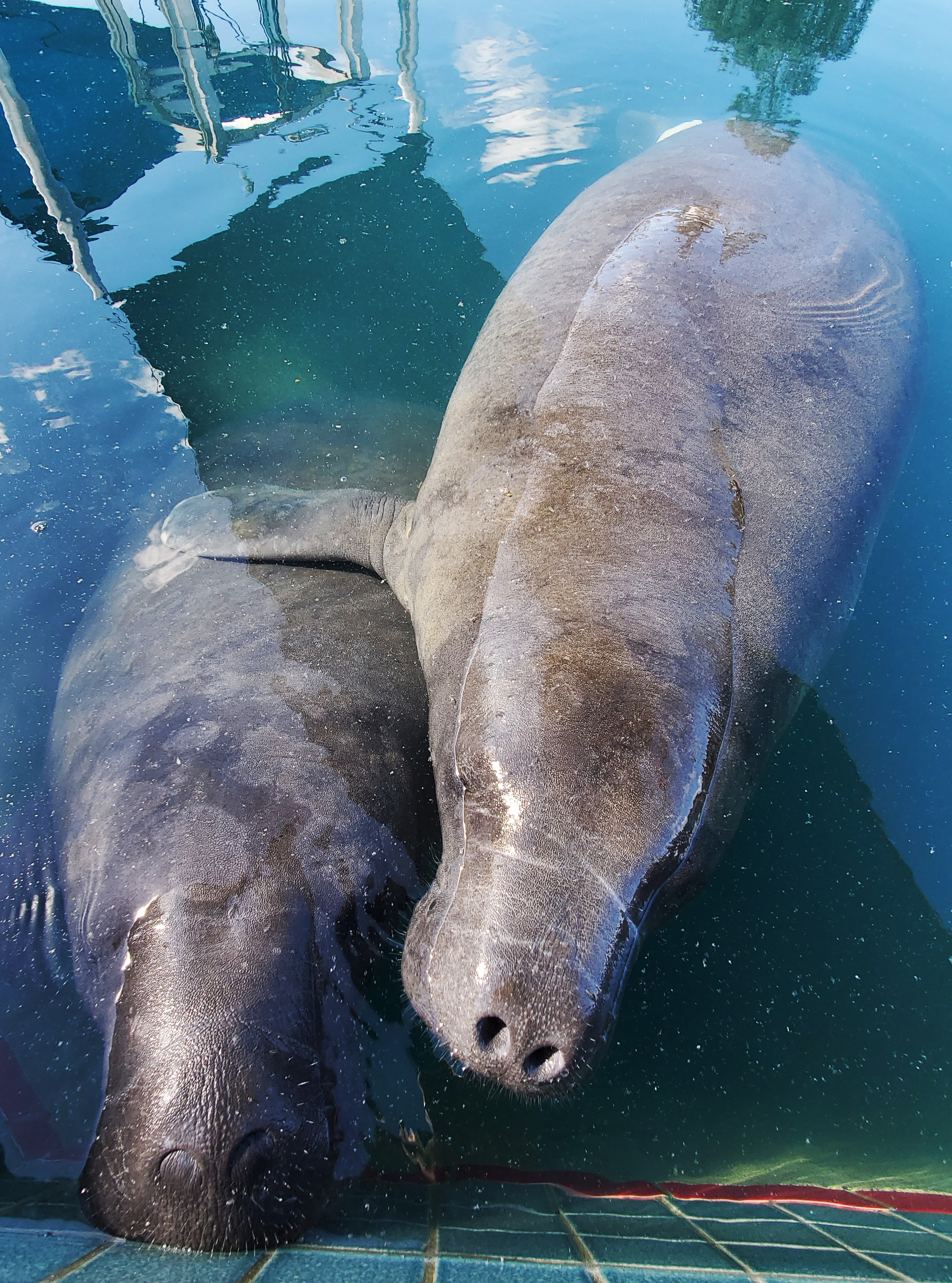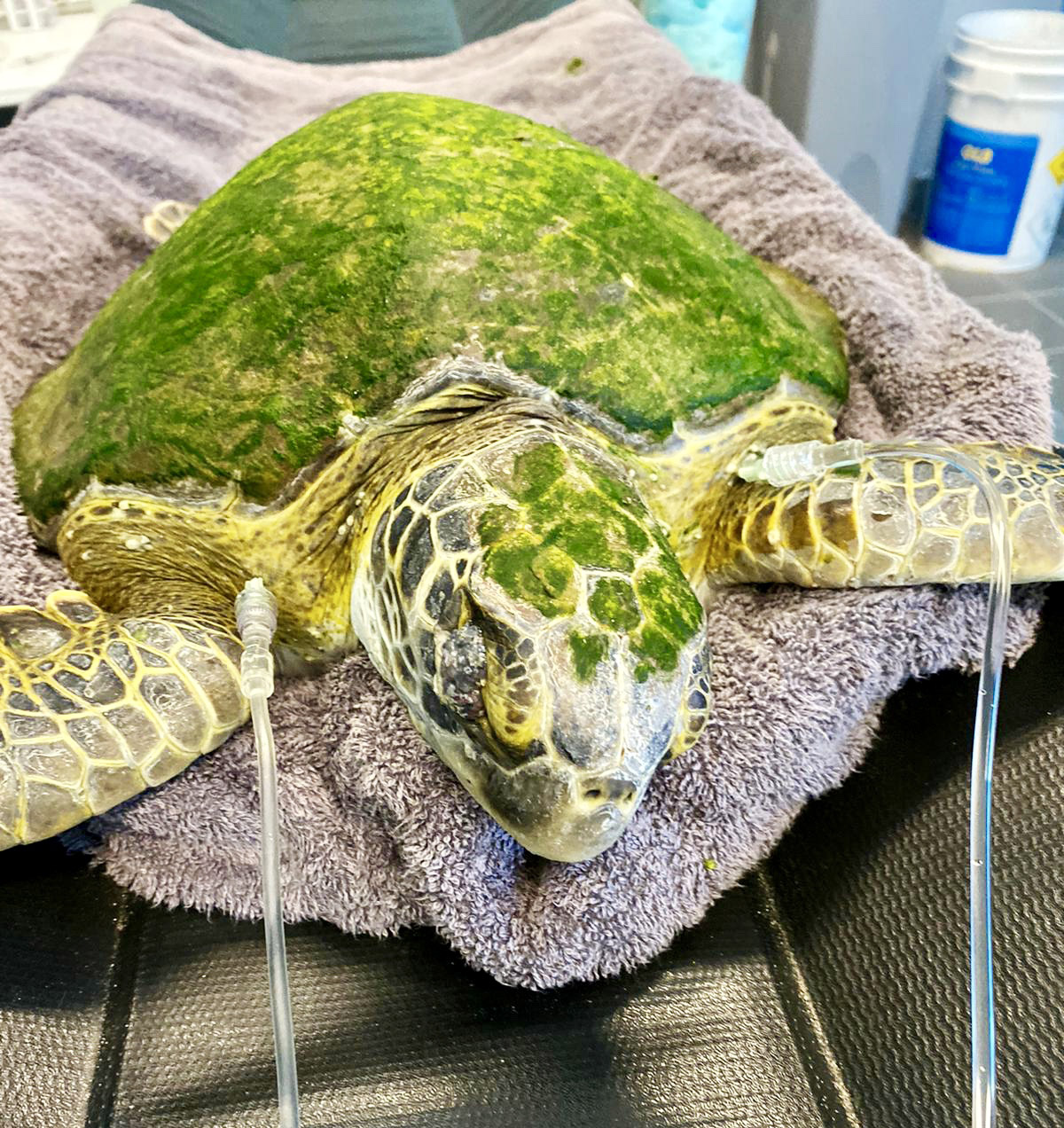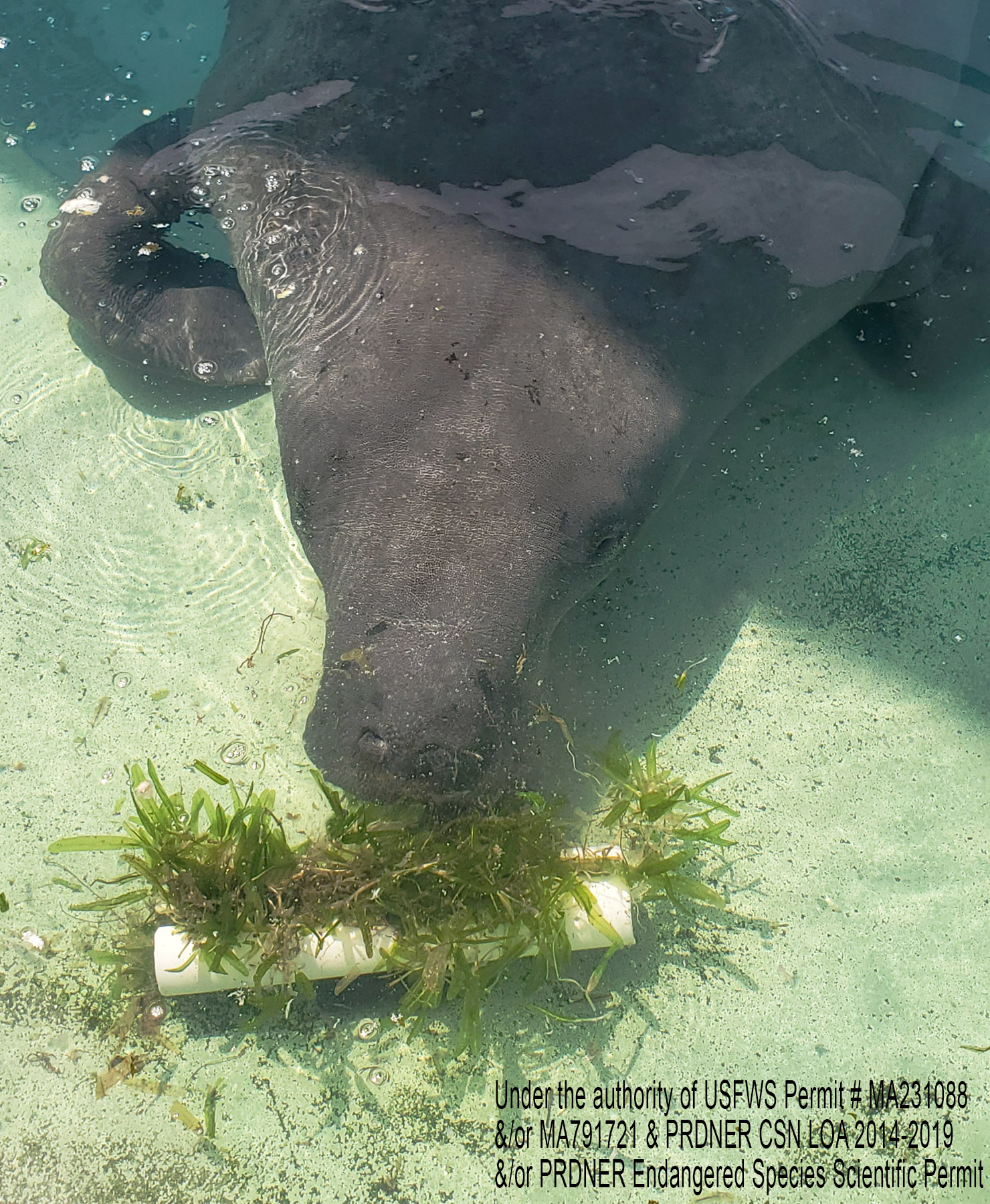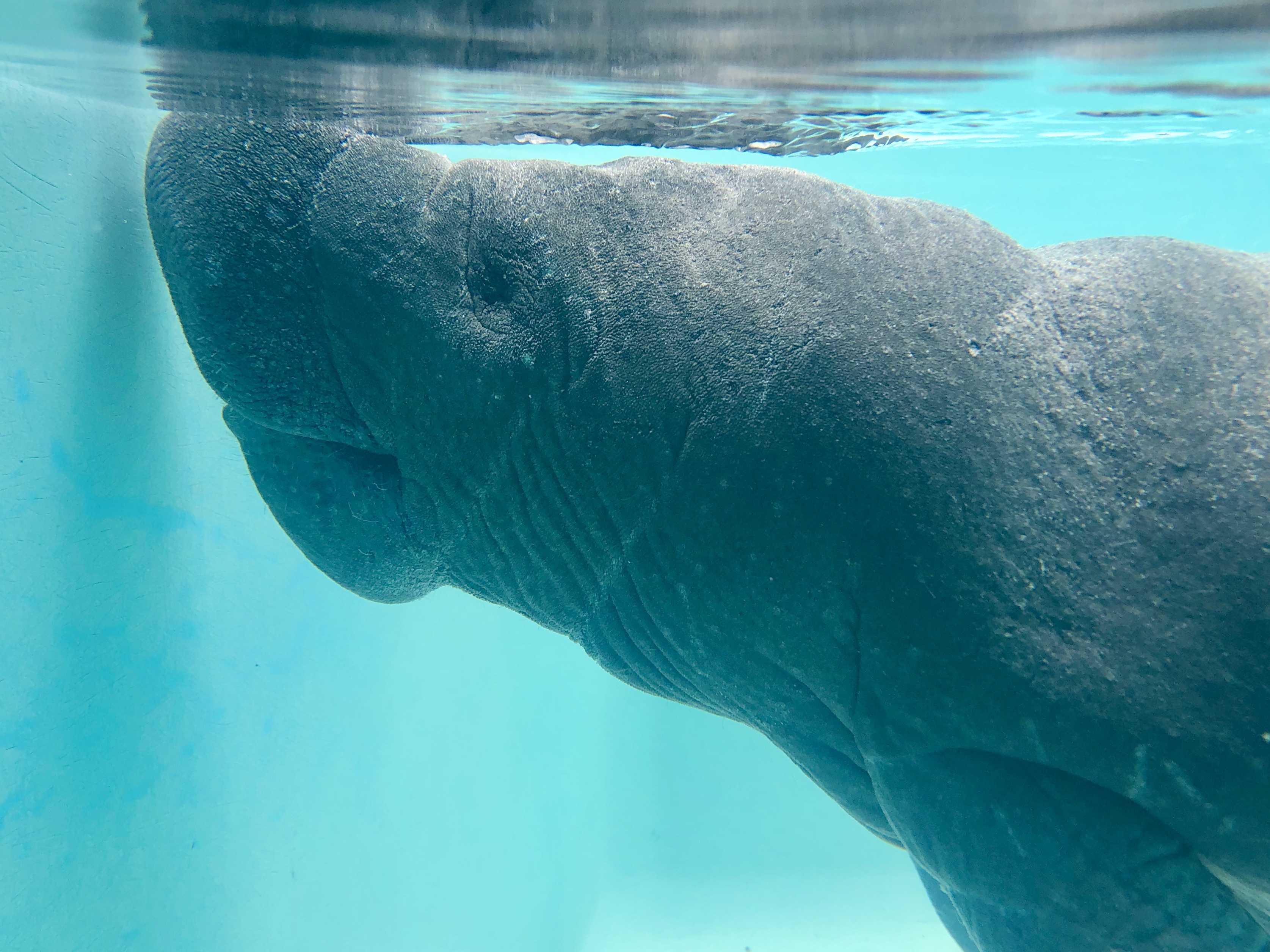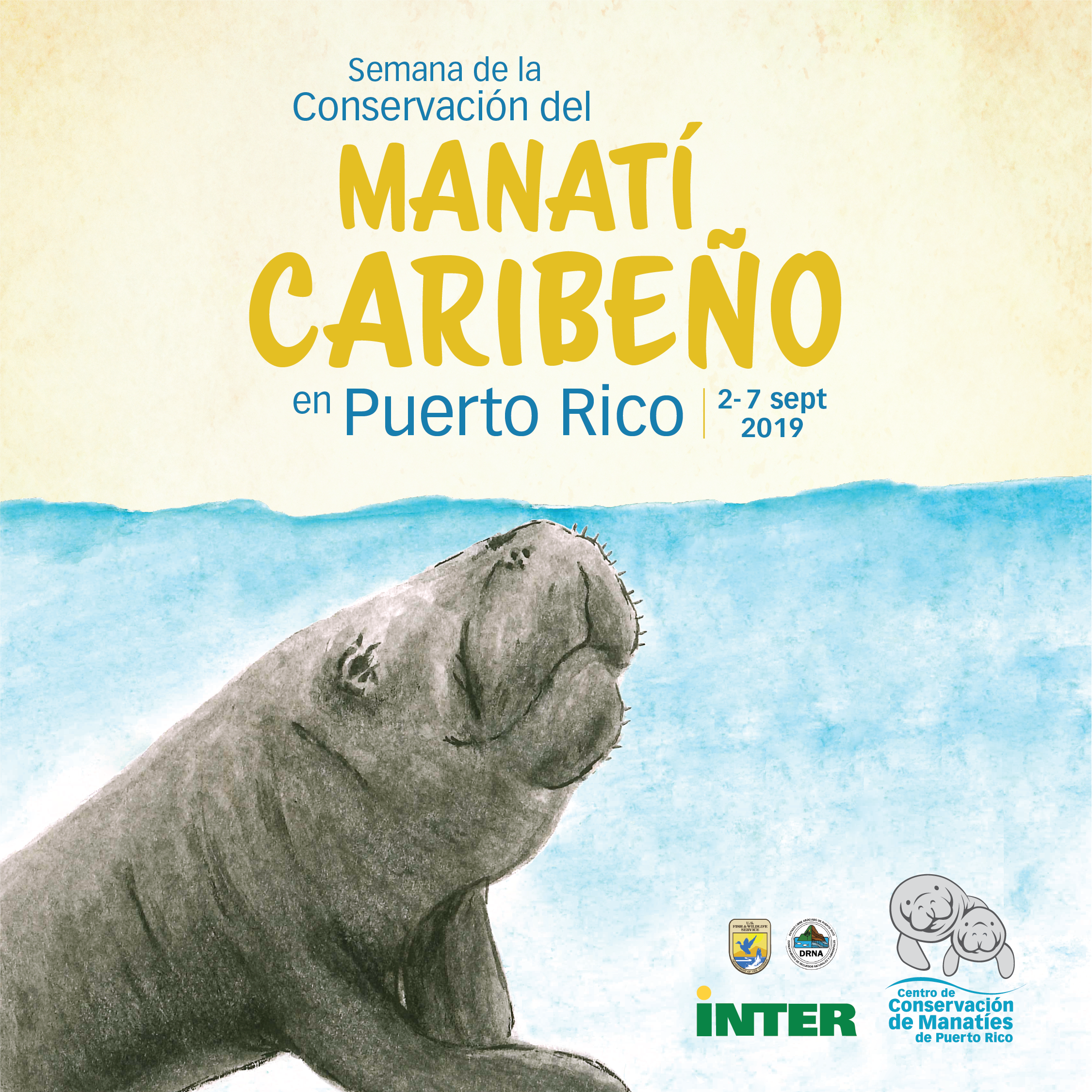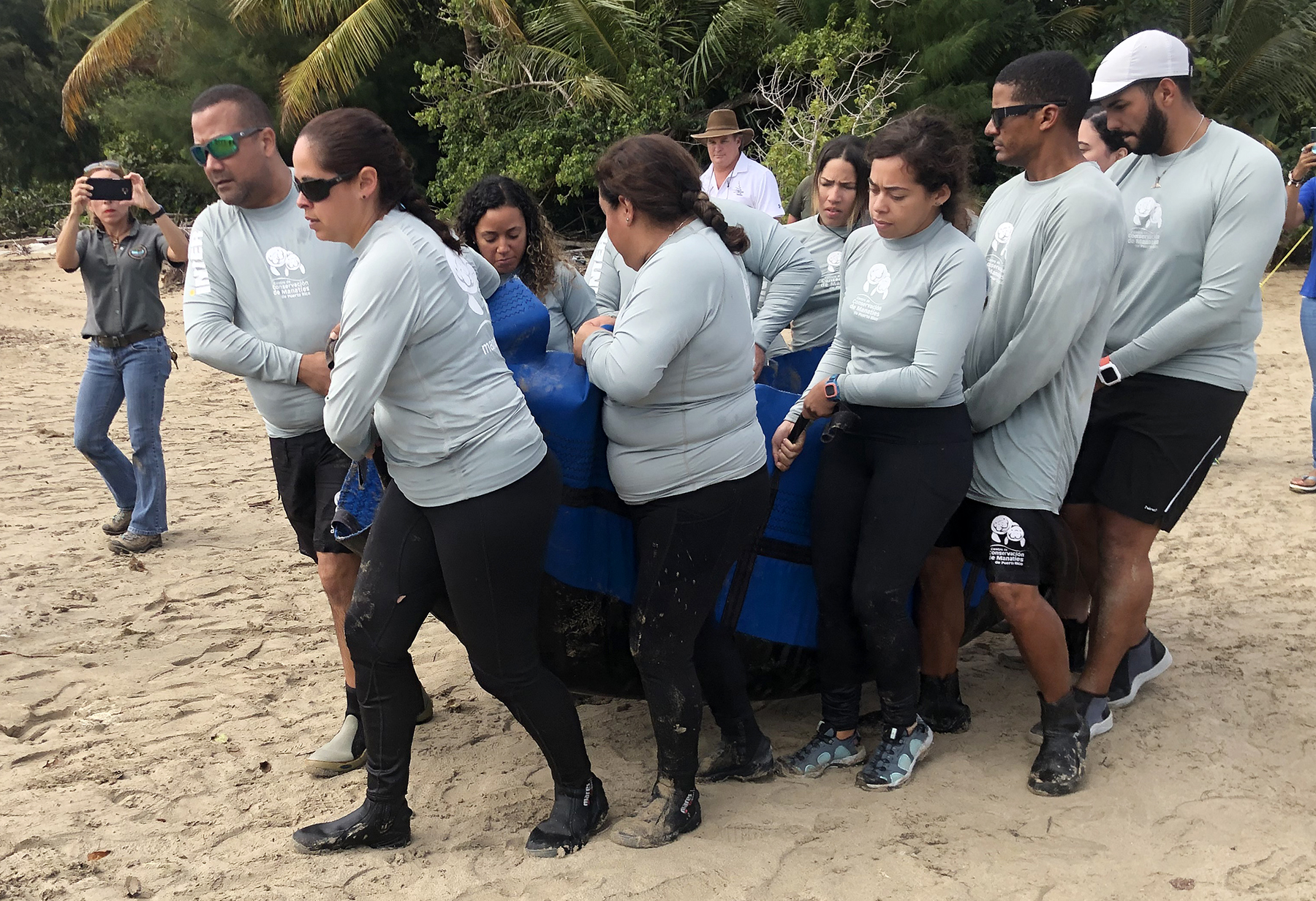 I am happy to announce that we successfully released back to the wild two manatees in Puerto Rico.
I am happy to announce that we successfully released back to the wild two manatees in Puerto Rico.
Tureygua and Mabo, both males, were rescued as calves in 2015 and 2016 in Isabela and San Juan, respectively. They were released today in the mouth of the Espíritu Santo River in Rio Grande at 475 lbs each.
We would like to take this opportunity to thank all involved in the rescue and care of these two manatees, particularly the Department of Natural and Environmental Resources, US Fish and Wildlife Service’s Caribbean Ecological Services, and Inter American University, all instrumental in this accomplishment by their support, permitting and endorsement of the Puerto Rico Manatee Conservation Center . Gracias, gracias, gracias for their support on our conservation work. We thank as well the three veterinarians that worked with these manatees, Antonio Rivera, Ricardo Martínez and Lesly Cabrias that looked after their medical care. But of upmost importance, thanks are due to the entire staff of the Manatee Center and its over 60 volunteers, who day and night looked after the husbandry of the manatees and their tank habitats during these 4 years.
The manatees were fed through in-kind donations of Caribbean Produce, Hill Brothers, Econo, Costco, Puerto Rico Supply, Banco de Alimentos, as well as Coca-Cola Bottling Company (bottled water). Dallas World Aquarium, EcoElectrica, Plaza Las Americas, Georgia Aquarium, Coqui Charities, Laboratorio Clínico Jollymar, Bahia Beach Resort, among others, provided support for their rehabilitation as well. During the passing of Hurricane Irma and María through Puerto Rico, the organizations part of the Manatee Rescue and Rehabilitation Partnership also donated supplies for the care of these two manatees. The contribution of all these “manatee friends” was key to our rehabilitation work with Tureygua and Mabo.
Both manatees will be monitored through satellite telemetry in cooperation with biologists from the foundation Alma de Bahía at Bahía Beach Resort.
Again, thank you for your help and participation in their rescue, rehabilitation and today’s release back to the wild.

